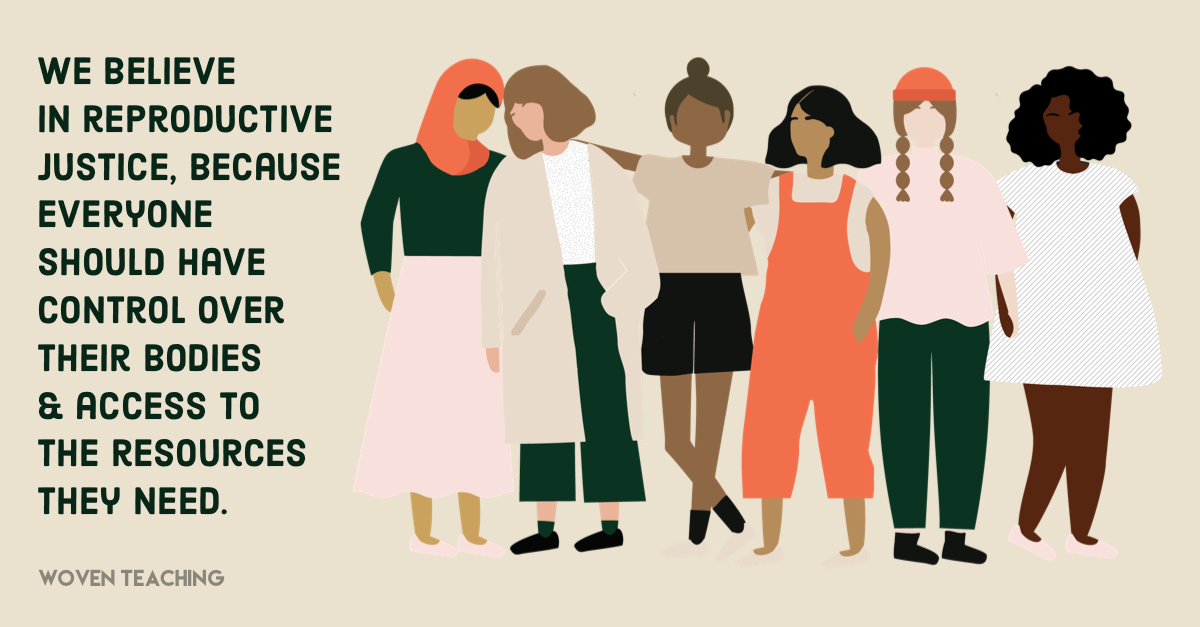What is Reproductive Justice?
/Reproductive rights in the United States are facing challenges throughout the country. Earlier this month, the governor of Alabama signed a bill into law that outlaws abortion under all circumstances, with the single exception of when the mother’s life is seriously at risk. Similarly, the governor of Georgia signed HB 481, a law which bans abortion as soon as a fetal heartbeat is detected. This can occur as early as six weeks after conception – a point at which many people do not know that they are pregnant.
These bills are the latest legal attacks on people who can get pregnant and give birth. Control over reproduction has a long and troubling legacy in the United States, particularly in marginalized communities. Historically, American society has valued certain women and children over others. For example:
During the era of slavery, enslaved Black women were forced to give birth in order to provide slaveholders with a new generation of free labor.
Through the 1970s, many Native children were forcibly removed from their families and sent to live in boarding schools.
Women of color, incarcerated women, and other marginalized groups continue to be subject to forced or coerced sterilization.
Until recent decades, unmarried mothers were pressured to give up their “illegitimate” children for adoption.
WHAT IS REPRODUCTIVE JUSTICE?
The movement for Reproductive Justice (RJ) both addresses legal challenges to the rights of people who can give birth and the need to address broader issues – particularly those facing people of color, low-income people, and LGBTQ+ people. Developed by Black women activists in 1994, the RJ framework combines the struggles for reproductive rights and social justice. It focuses on three issues:
The right not to have a child
The right to have a child
The right to parent children in a safe and healthy environment
At RJ’s core is the belief that safety, dignity, and bodily autonomy for all persons is a fundamental human right. Modeled on the Universal Declaration of Human Rights, reproductive justice demands that every person have both the choice and the resources to make decisions concerning reproduction. Among other things, it advocates for:
Comprehensive sex education for all students
Adequate wages to support families
Access to and funding for contraception and abortion
Freedom from violence – e.g. domestic violence and police violence
The right of all people to self-determination in the creation of how, when, and why they do or do not create families.
Working in the RJ framework means taking a holistic view of reproduction and working on issues of climate justice, mass incarceration, economic equality, and more. It demands that we center the needs of the most marginalized communities and continue to fight for bodily autonomy and legalized abortion.
WHAT CAN WE DO?
Where there is “freedom of choice” but no realistic access to the resources necessary to make those choices, the right cannot be said to apply to all people. As human rights educators, we must advocate for a system in which everyone has both the legal right to choose what happens to their body and the resources to make those choices.
For those reasons, we must support reproductive justice for persons who can get pregnant and have a child. This advocacy will necessarily involve support for many different initiatives. For example:
We must take a stand against legal challenges to the right of bodily autonomy.
We must support the movement for an adequate wage for all workers. This way, people can access the reproductive services they need and have the opportunity to parent children in safe, healthy, and dignified environments.
We must teach our students the difference between choice and access, and emphasize why it is important for all people to have access to the resources and services they require.
The struggle for reproductive justice is not easy, but it must continue until everyone is able to control their reproductive lives. The health, safety, and dignity of all communities depend on it.
CLASSROOM RESOURCES
Discussing reproductive rights and reproductive justice can be challenging. Here are a few exercises that you can adapt for use in your classroom to discuss these controversial topics:
Roe v. Wade | PBS LearningMedia
Teaching Controversial Topics: Abortion | Perspectives on History
Revisiting Roe v. Wade | The Learning Network (New York Times)
Making Women the Subjects of the Abortion Debate: A Class Exercise that Moves Beyond "Pro-Choice" and "Pro-Life" | Feminist Teacher
NOTES
[1] Not all persons who have the ability to be pregnant and give birth identify as women. Many others, including gender non-conforming individuals and transmen, can also experience pregnancy.
[2] Manning Marable, How Capitalism Underdeveloped Black America: Problems in Race, Political Economy, and Society (Chicago: Haymarket Books, 2015), 64.
[3] Loretta J. Ross and Rickie Solinger, Reproductive Justice: An Introduction (Oakland, CA: University of California Press, 2017), 65.
[4] Under the Hyde Amendment, federal funds cannot be used to abortion. As a result, access to abortion is automatically restricted for women who rely on the federal government for healthcare (e.g. Medicaid recipients).
